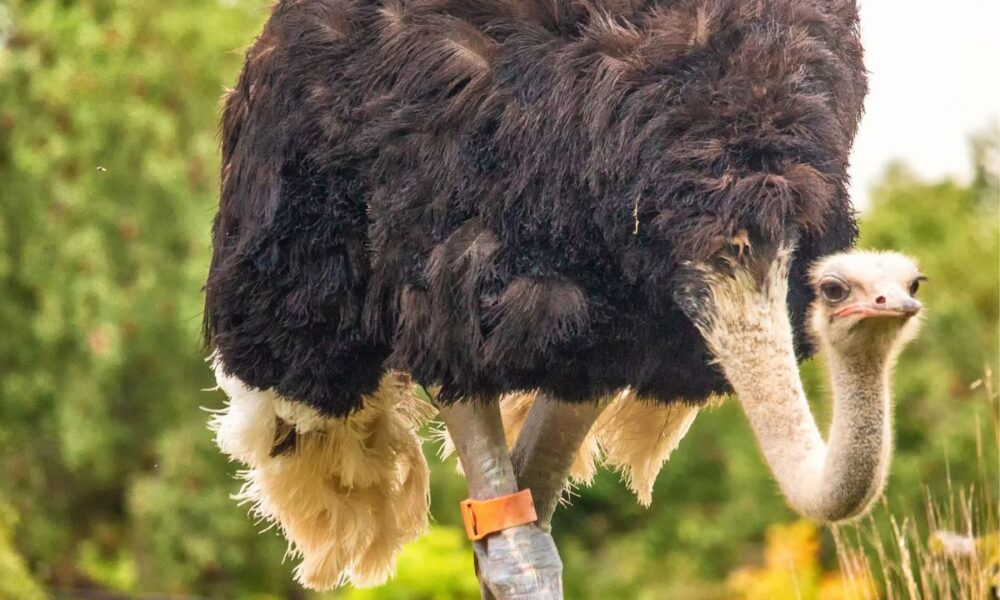After months of legal and political battles, the standoff over more than 300 ostriches has ended in Canada, where authorities shot hundreds of birds in what they called a “humane depopulation.”
The Canadian Food Inspection Agency (CFIA) ordered the destruction of a large collection of birds after detecting avian influenza (bird flu) on the farm last December, according to CBS. However, the decision drew international attention, including input from Health Secretary Robert F. Kennedy Jr. and Dr. Oz, while also sparking protests from animal rights advocates, due to the peculiar reasoning behind Canada’s push to shoot the entire flock.
Why are these birds so important, politically and in terms of medical research?
A significant part of the controversy centers on RFK Jr.’s push for studying natural immunity in ostriches (potentially via antibody-rich eggs for medicinal research), which some critics argue undermines “Big Pharma’s” vaccine-driven model.
RFK Jr. believes the surviving ostriches could teach us how to fight bird flu naturally by studying how the birds build their own immunity. It’s a low-cost idea that could lead to new treatments using antibodies from their eggs.
.@HHSGov is so grateful to President Paul MacKinnon and the Canadian Food Inspection Agency for their willingness to spend time with @DrMakaryFDA @NIHDirector_Jay and myself yesterday, and for their openness to discussing a collaborative project with NIH, FDA and CDC to conduct a… pic.twitter.com/p9uVFBkCBA
— Secretary Kennedy (@SecKennedy) May 23, 2025
Critics argue that big drug companies allegedly rely on a different plan: wipe out infected flocks, then sell vaccines to prevent the next outbreak. Those vaccines are patented, profitable, and part of a market expected to grow from $3.16 billion in 2023 to $4.5 billion by 2032, per MarketSearchFuture.com.
Here’s the real divide: natural immunity research (keep the birds, learn from them) versus vaccine development (cull the birds, protect the market).
The numbers tell the story:
- Vaccine industry: $3.41 billion in 2025
- Natural immunity studies: about $85 million
For every dollar spent studying the ostriches, drugmakers expect to earn nearly $40 on bird flu vaccines.
That explains at least in part why a fight over 300 birds in Canada may have caught the attention of the White House and why the debate is far from over.
On December 31, 2024, the CFIA issued a Notice to Dispose under Canada’s Health of Animals Act after two ostriches tested positive for H5N1. Within weeks, 69 birds died with flu-like symptoms. The agency then invoked its “stamping-out” policy, which requires destroying infected flocks to prevent the spread of more diseases.
The CFIA took control of the property, which held a large collection of ostriches, on September 22, as reported by CBC News. The agency sealed off the pens and prepared to cull the surviving birds, even as the farm’s owners insisted that many of them had developed natural immunity.
Universal Ostrich Farms — run by Karen Espersen, Dave Bilinski, and their daughter Katie Pasitney — fought the ruling in Federal Court and then appealed all the way to the Supreme Court of Canada. Yet, Lower courts eventually upheld the cull as legal and necessary to protect public health and prevent potential damage to Canada’s poultry industry.
On November 6, according to CBC, the Supreme Court of Canada declined to hear the final appeal.
Hours later, CFIA teams in protective suits moved forward to kill the flock of birds. Professional marksmen shot the ostriches behind hay bale barricades, a method the agency said was the most humane option given the size and quantity of the animals.
The forced cull drew protests to the normally quiet community of Edgewood.
Some demonstrators gathered outside the farm entrance, yelling at CFIA staff and blocking vehicles from entering. Some supporters camped on the property, prompting involvement from the Royal Canadian Mounted Police. Local businesses reported harassment from activists who traveled into the area, turning the dispute into a fight far larger than the town itself could handle.
Pasitney posted a series of updates on social media as the situation escalated, stating that the family had done everything possible to save the flock.
“What evidence-based agricultural policy? No tests done after herd immunity was achieved. How about a data framework for continued testing of animals, more collaboration with agencies and small farmers.. or ratites policy that’s more in line with truth, ostriches are not poultry,” Pasitney wrote.
The case garnered international attention due to complaints from some of the most prominent political figures in the United States, who opposed the cull.
Kennedy argued the surviving ostriches could be used in a joint U.S.–Canada research project on natural immunity to H5N1. He and Oz urged Canadian officials to pause the depopulation order, suggesting that the farm could contribute valuable data.
Oz himself offered to relocate the ostriches to his ranch in Florida to continue research without any export complications, as reported by the CBC. Additionally, New York businessman John Catsimatidis also supported the effort to relocate the birds safely, publicly encouraging further examination of the flock instead of killing them.
Canadian officials continued to claim that the cull was required under national law and international disease-control standards. They argued that immunity claims could not be verified and that leaving infected birds alive risked viral mutation or wider spread — especially during ongoing H5N1 outbreaks across North America.
More than 14 million birds have been culled in Canada since 2022.
Cleanup is now underway at Universal Ostrich Farms.


